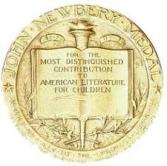
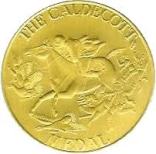
Pick us! Pick us! We are ready to serve! We’ve just been reading about the Association for Library Service to Children, which annually recognizes book and video excellence with ten different medals and awards. Would my son and I love find ourselves on any of the award selection committees? YES! Pick us! Pick us! Once we settled down from our committee responsibilities fantasy, we narrowed our focus to learn everything about two of the ten awards: the Newbery Medal (literature) and the Caldecott Medal (book illustration):
– The Newbery Medal – we read “Balderdash” (Michelle Markel/Nancy Carpenter). A snappy, brief look at the life of publisher John Newbery. Inspired by philosopher John Locke’s quote, “Reading should be a treat for children”, Newbery enjoyed enormous success by printing books that children WANTED to read (prior to this, most reading material for children was designed to put the fear of the afterlife into the reader’s behavior). The first Newbery Medal was awarded in 1922. We read through the list of Newbery Medal and Honor Book award winners and notated those books we had read:
- 2016 – The War that Saved My Life – Important
- 2013 – The One and Only Ivan – Liked
- 2011 – Turtle in Paradise – Really liked
- 2008 – The Wednesday Wars – Really liked
- 2007 – Penny from Heaven – Really liked
- 2003 – Hoot – Satisfying
- 2003 – Surviving the Applewhites – Oh how we LOVE this book, have read 4 times
- 2002 – Everything on a Waffle – Liked
- 2001 – A Year Down Yonder – Really liked
- 2001 – Because of Winn Dixie – Liked
- 2001 – Hope was Here – Really liked
- 1999 – A Long Way from Chicago – Really liked
- 1999 – Holes – Important
- 1991 – Maniac Magee – Liked
- 1988 – Hatchet – we’ve read this 3 times
- 1984 – The Sign of the Beaver – we are currently reading this, like it a LOT
- 1978 – Ramona and Her Father – Liked
- 1973 – Frog and Toad Together – Really?
- 1963 – A Wrinkle in Time – Really liked
- 1961 – The Cricket in Times Square – Liked
- 1953 – Charlotte’s Web – The best
- 1952 – Ginger Pye – Liked
- 1939 – Mr. Popper’s Penguins – Liked
- 1923 – The Voyages of Dr. Doolittle – we are currently reading this, LOVE this book
24 down, 74 to go – Question for my son: shall we read every Newbery Medalist? YES! Why not, what else are we doing? The challenge begins.
– The Caldecott Medal – we read “Randolph Caldecott – The Man Who Could Not Stop Drawing” (Leonard S. Marcus) – a most comprehensive biography, filled with Caldecott’s charming, skillful, intuitive drawings. This book provoked us to order “Old Christmas: Sketch Book of Washington Irving” (1876) with illustrations by Randolph Caldecott (we are saving this for December reading). The Association for Library Services to Children began awarding the Caldecott Medal in 1937.
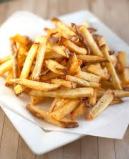
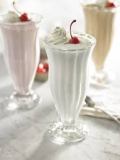
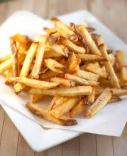
Story problem from the local diner – Miss Jeanette (the new diner manager) has an idea to spark positive PR (vocab) for the diner! She is proposing that for the upcoming summer months, the diner award “Shake and Fries” vouchers (vocab) to high school students who volunteer during story-time at the local library. Miss Jeanette is projecting that 50 coupons will be awarded over the summer. If a “Shake and Fries” voucher costs the diner $3, how much how much will the diner potentially spend supporting the story-time literacy event?
A.) $35 B.) $53 C.) $150 D.) $350
Lactose intolerant students earning vouchers can substitute lemonade for the milkshake, and (happy day) the cost for the diner will be reduced by 20%. If 10% of the students opt for the lemonade, what is the total projected cost of the diners’ voucher program?
A.) $20 B.) $45 C.) $147 D.) $235 (answers at bottom of post)
A Serendipitous Pairing – Two A+ books that we just happened to be reading at the same time, that SHOULD be read at the same time:
“My Life with the Chimpanzees”, an autobiography (vocab) by Jane Goodall
and
“The Voyages of Dr. Doolittle”, by Hugh Lofting
My son and I were about three chapters into the Dr. Doolittle book (and just loving it) (meaning that my son has a difficult time letting me shut the book at the end of each night’s reading) when we started the Jane Goodall book. And then, WHAT A SURPRISE! Jane Goodall mentions several times in her autobiography the impact the Dr. Doolittle books had in shaping her future. My son and I love thinking that maybe Hugh Lofting (1886 – 1947) might know how much good work his books inspired.
Dr. Doolittle inspires our classical music selections – Right there, in chapter 6, Dr. Doolittle entertains the Stubbins family with his flute playing! What doesn’t that man know how to do? The book states that the visit took place in 1839, so my son and I put together a little flute recital program, selecting flute pieces that were composed prior to 1839 – pieces that Dr. Doolittle actually could have played –
- Francois-Joseph Gossec’s “Tambourin for flute and orchestra”, composed in the early 1790’s. This is just so darn sweet. Play, Dr. Doolittle, play!
- “Badinerie” from Bach’s Orchestral Suite No. 2, 1739. We learned that a badinerie is a brief and lively dance. We are not sure that anybody could play this piece with greater accuracy and speed than Sir James Galway (except, of course, Dr. Doolittle) –
- Beethoven’s spritely “Trio for 3 Flutes in G major”, movement III. The story goes that this piece was composed in 1786 when Beethoven was fifteen. Whoa. Vivacious and brisk – the perfect conclusion for our Dr. Doolittle mini concert –
Welcome to the best part of my day!
– Jane BH
(Story problem answers: C.) $150 and C.) $147)

